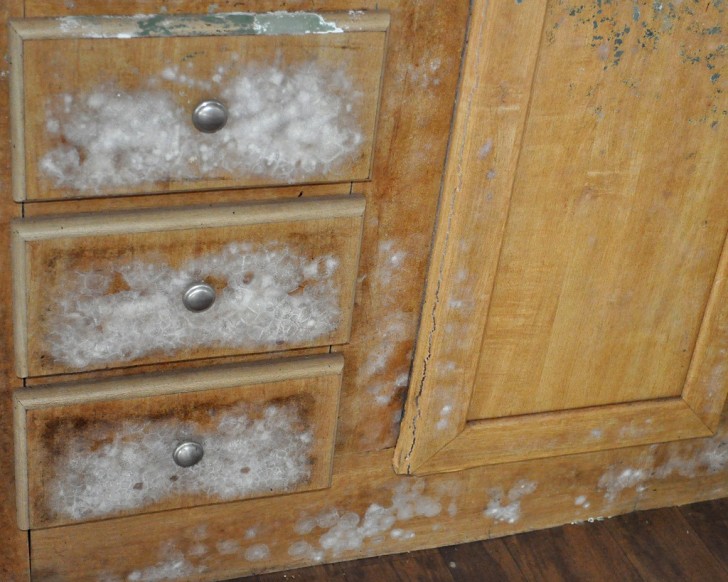Find out how to remove mold from your home without using special detergents

All it takes is a little moisture to get trapped in a room, and in short order, mold begins to appear on various surfaces. The walls are mainly affected, but sometimes so is the furniture, which gets covered with dark or light stains depending on the type of mold developing on them.
Removal is certainly possible with specific products and indeed, if the situation is serious, it is always better to have specialists intervene. But if the area affected by mold is limited, we can also use ingredients that we usually have at home to deal with the problem. In fact, you don't just need specialized soaps to get rid of mold.
Remove mold from the walls

Creativo
Basements are those most prone to mold formation, but sometimes even bathrooms or other rooms in the house that are not opened and ventilated properly can often be fertile ground for the proliferation of this fungi. The circulation of air and above all sunlight, are the best allies in keeping mold at bay.
So can we do if we see mold on the walls? The most effective method is to use bleach.
Mix one part bleach with three parts water, and then, using a spray bottle or a basin with rags or sponges, use the mixture on the affected walls. The solution must remain in contact with the mold for at least a quarter of an hour before starting remove the mold. After 15 minutes (or more), take a slightly abrasive sponge, or a brush, and scrub to remove the mold stains.
Remember that everything you use on mold will then have to be washed separately with a (much more diluted) bleach solution, or with hydrogen peroxide.
To finish the job, or if there isn't much mold, you can then use a mixture of white vinegar and hydrogen peroxide, mixed in equal parts. This will also need to be sprayed over the entire area to be cleaned, and left to air dry.
During these operations, it is important to use gloves and to ventilate the room, also protecting the respiratory tract against mold spores.
Removing mold from wood

Marilee Caliendo/nara.getarchive.net
If you instead want to clean moldy furniture, the products to use are: plain vodka (even a low-quality one), dish or Marseille soap, white vinegar and hydrogen peroxide.
First, move the furniture into the sun and air, so that you can work on it more easily and speed up the whole washing and drying process. If this is not possible, it is still imperative to ventilate the room you're working in. And never forget to protect your hands and airways.
If you have a vacuum cleaner with a HEPA filter, pass it over the furniture to remove the bulk of the mold.
- If the furniture is painted or has a glossy finish, mold is unlikely to penetrate this barrier, so washing with a wood cleaner or with water and mild dish soap or Marseille soap may be sufficient. Obviously, you have to rinse off well and dry thoroughly, changing the cloths at each step and then making sure to wash them well to remove the mold from them too. To be on the safe side, you can spray hydrogen peroxide (at 15 - 20 volumes) and leave it in contact with the mold for about ten minutes. If you are worried about how it might affect the wood, test it on an inconspicuous part of the furniture first.
- Generally, hydrogen peroxide is the best solution for wood: it won't damage it like bleach or vinegar could, and it's effective in killing mold spores. On its own, however, it is not always able to remove stains, which may need to be treated with a delicate soap or one specifically for wood.
In any case, ensure the furniture dries out completely after cleaning - perhaps with the help of fans or heaters - before polishing and/or oiling the pieces.
In short, mold can be removed but it requires effort and you need to act quickly as soon as you detect it!